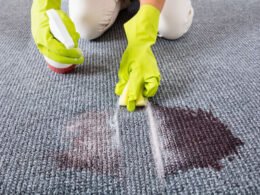The bedding fabric is the most crucial element to be considered when making a selection of bedding with comfort and skin health. Among the most popular bedding fabrics include linen and cotton, both of which possess different benefits and qualities. To sleep, some people resort to the use of bed linen UK luxury products, which are gaining popularity. Linen breathes and wicks. It is usually the textile I suggest for people who have sensitive skin because linen keeps the skin cool and dry. Cotton is gentle, soft, and exceptionally durable; hence, cotton is a classic for all skins. However, knowing what fabric best works in your support of your skin needs would be about comparison of these attributes in a given fabric: texture, breathability, and maintenance requirements. Let’s discuss this with all their pros and cons, then make a better choice of the best for enhancing quality sleep as well as your skincare routine.
Texture and Softness
For those who like the feel of linen as a refreshing material, its coarser texture has a subtle exfoliating quality. Cotton, especially higher-count types, feels soft from the moment it is touched and is ideal for very sensitive skin. Linen is going to be more prickly at first but will soften with use and wear and give a comfort different from that of cotton. For those who like a gentle, instant feel, there is cotton, but one of the great long-term attributes of linen is softening over time.
Hypoallergenic
Linen is naturally hypoallergenic, meaning it is a huge help for those with sensitive skin or allergies.
It never traps dust mites, and other allergens either, unlike so many different fabrics, even cotton.
Cotton, although hypoallergenic in itself, traps more dust and allergens if it is not cleaned frequently. Linen bedding will decrease the number of allergens present in your sleep environment and help avoid skin irritation or allergic reactions. For those with sensitive or reactive skin, linen is a prime candidate for hypoallergenic bedding, which contributes to skin health.
Durability and Lifespan
This one is durable; it would last longer than cotton bed linen. With proper care, linen bedding will last even for years and still has its structure and appearance in place. It is durable, and this makes the product sustainable as it can be used for a considerable number of years before it should be replaced as compared to cotton bedding. Cotton is also very durable; however, it may eventually wear out, especially in lower thread counts. While both fabrics demand delicate care, the natural durability of linen makes the textile last longer as it can be an excellent investment for those who do expect quality, durable beddings.
Environmental Impact
Linen- a textile product out from flax plants and holds one of the most ecologic-friendly fabrics because this would require minimal water and no pest control. Its ecological processes make it a good choice for its consumers. Cotton production, for instance, requires much more water and chemicals that may lead to environmental stress. Organic cotton is the more sustainable alternative, but linen still has a lower environmental impact overall.
Maintenance and Care Requirement
Linen is a premium fabric material that calls for specific care, but once the rhythm of washing is established, it doesn’t become a difficult task. It’s usually washed in cold water and laid to dry in the open air so as not to destroy its natural structure. Cotton is a bit more indulgent in the washing process tolerates warm water very well and can be washed often without losing its soft texture. Cotton is convenient if bedding can be frequently washed without too much of a hassle.
Linens, on the other hand, may need a little more care, which would also be good for the material, hence rewarding in themselves, because of their durability and ability to indulge your skin.
Conclusion
Both linens and cotton have unique advantages to them, hence which will it be: the end is up to personal requirement and choice. Cotton is soft and easy to maintain; thus, it will suit the needs of those who seek to enjoy immediate comfort and convenience. In terms of its support for skin health, linen has a slight lead, especially for people who have sensitive skin or other specific temperature-regulation needs. Evaluate your priorities and understand which type of fabric is strongest so you can make an educated decision that could improve sleeping quality as well as enhance the skincare routine.










